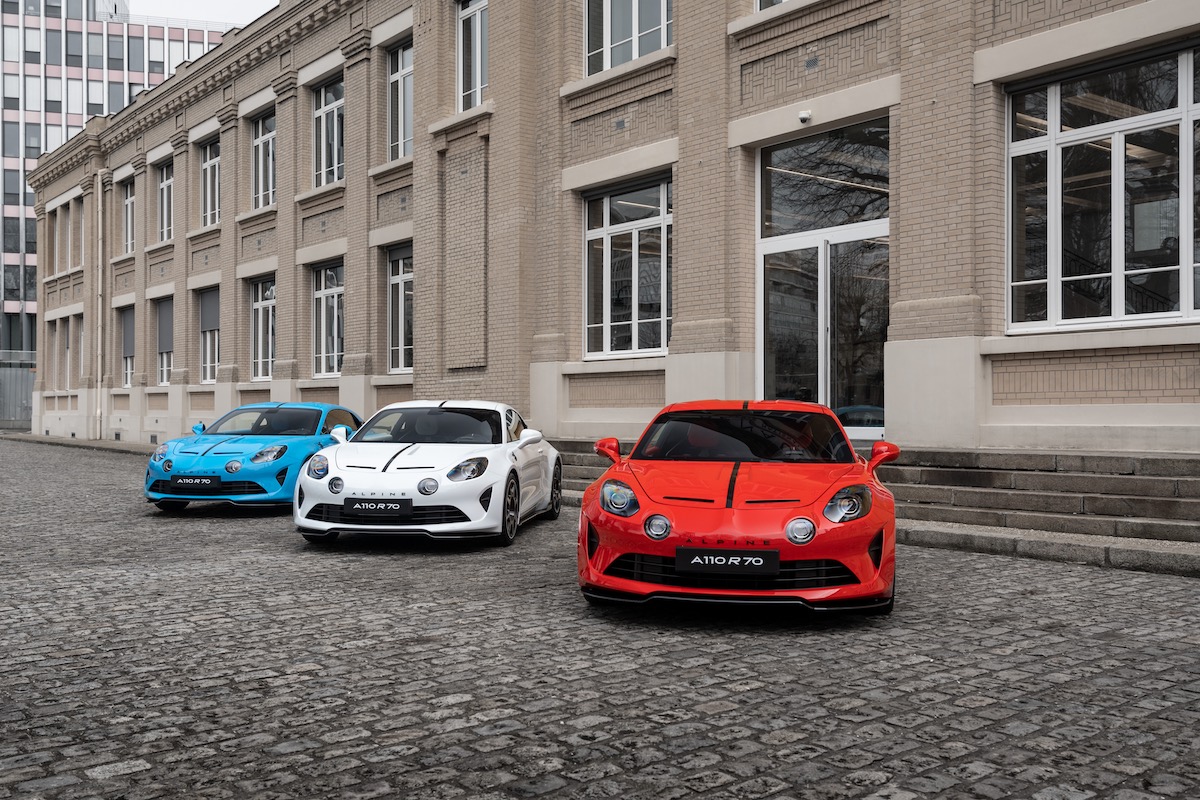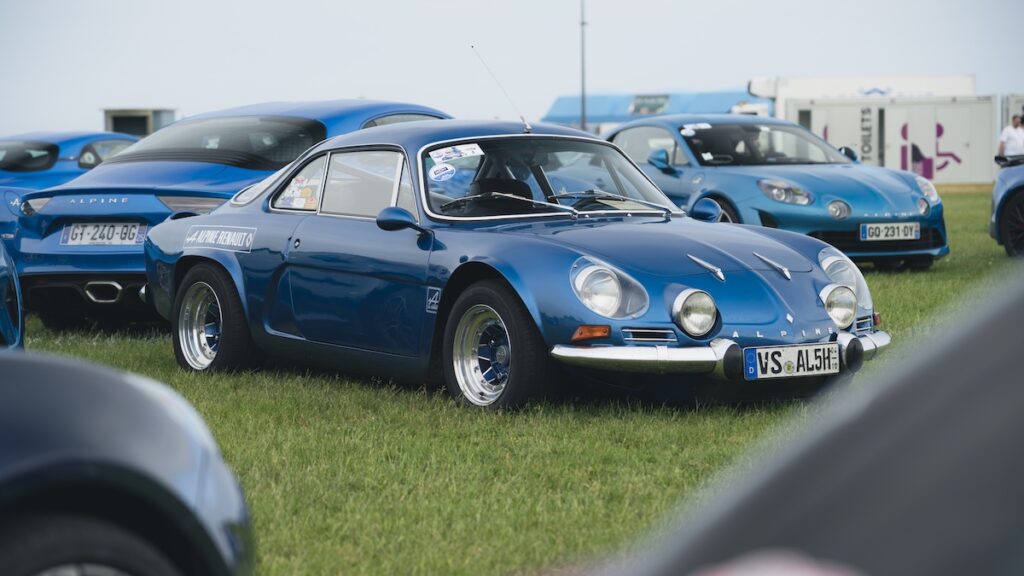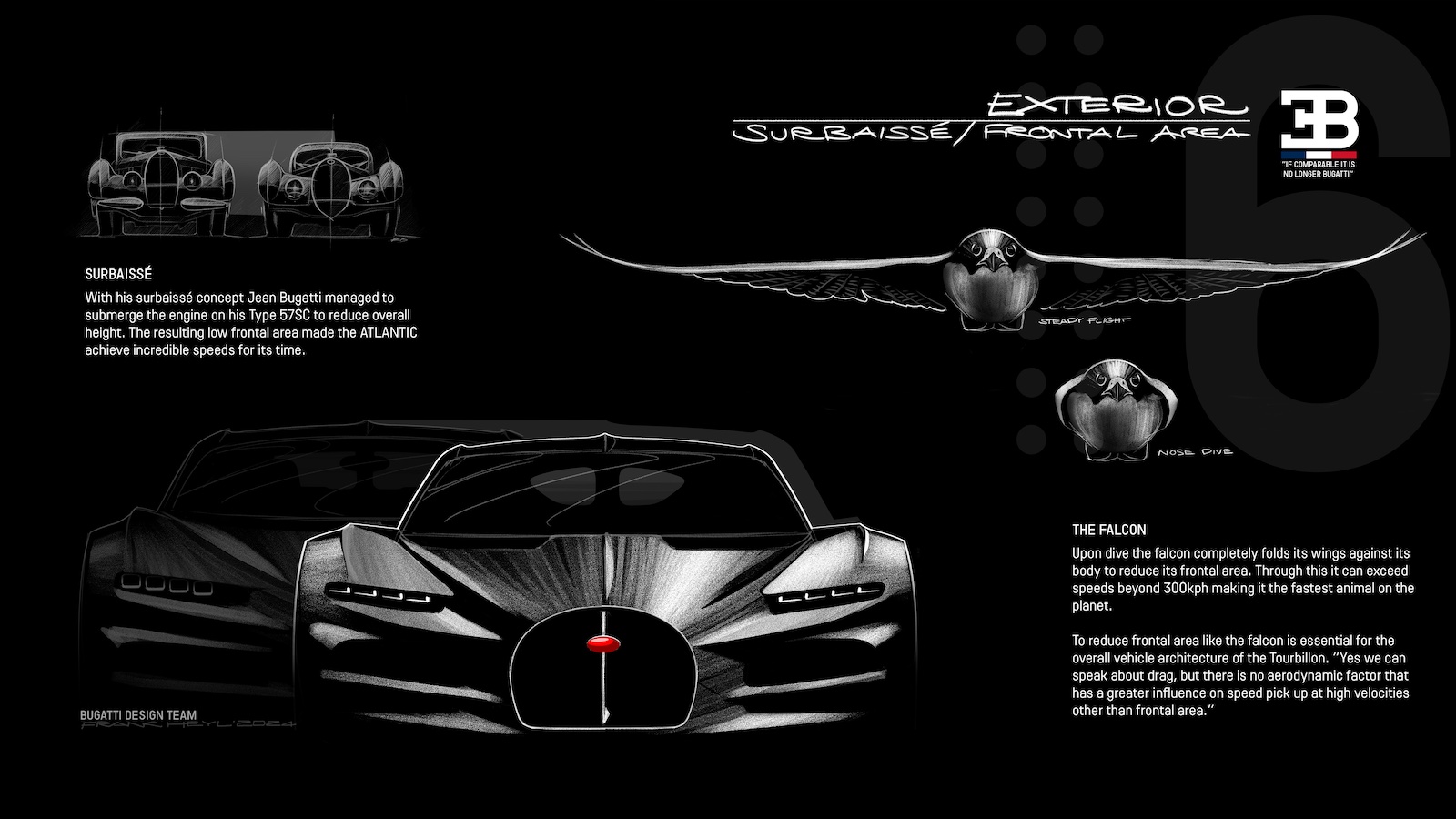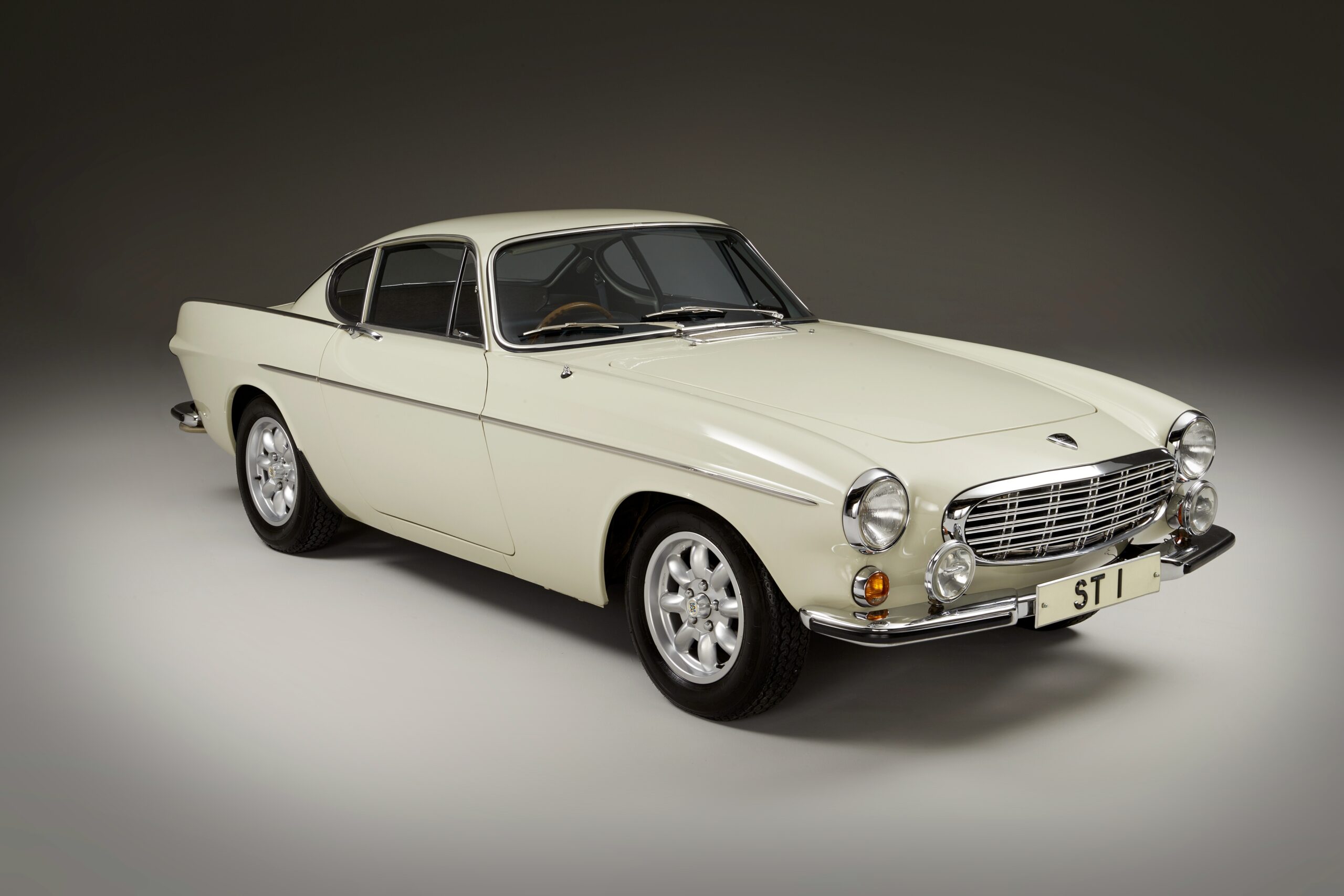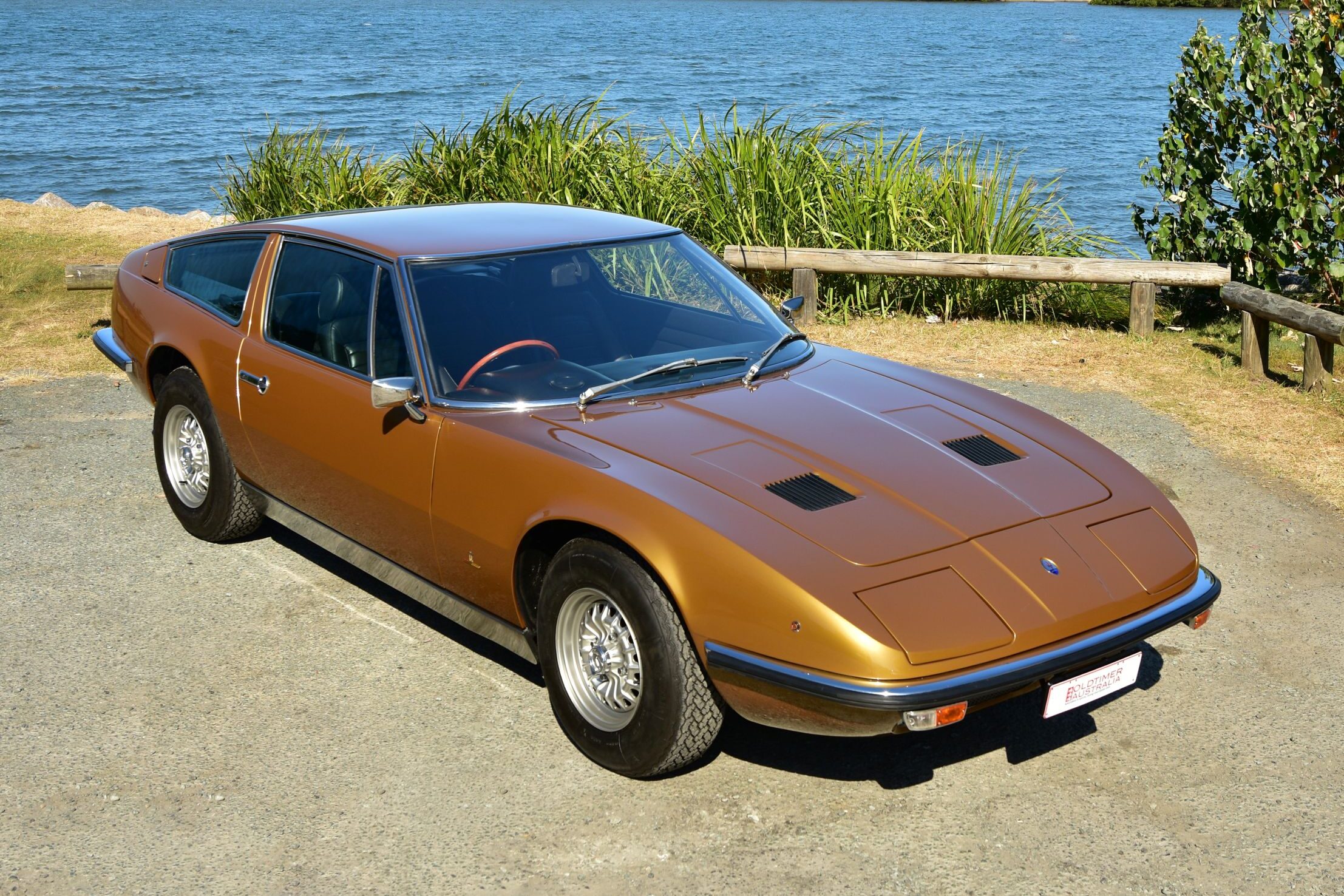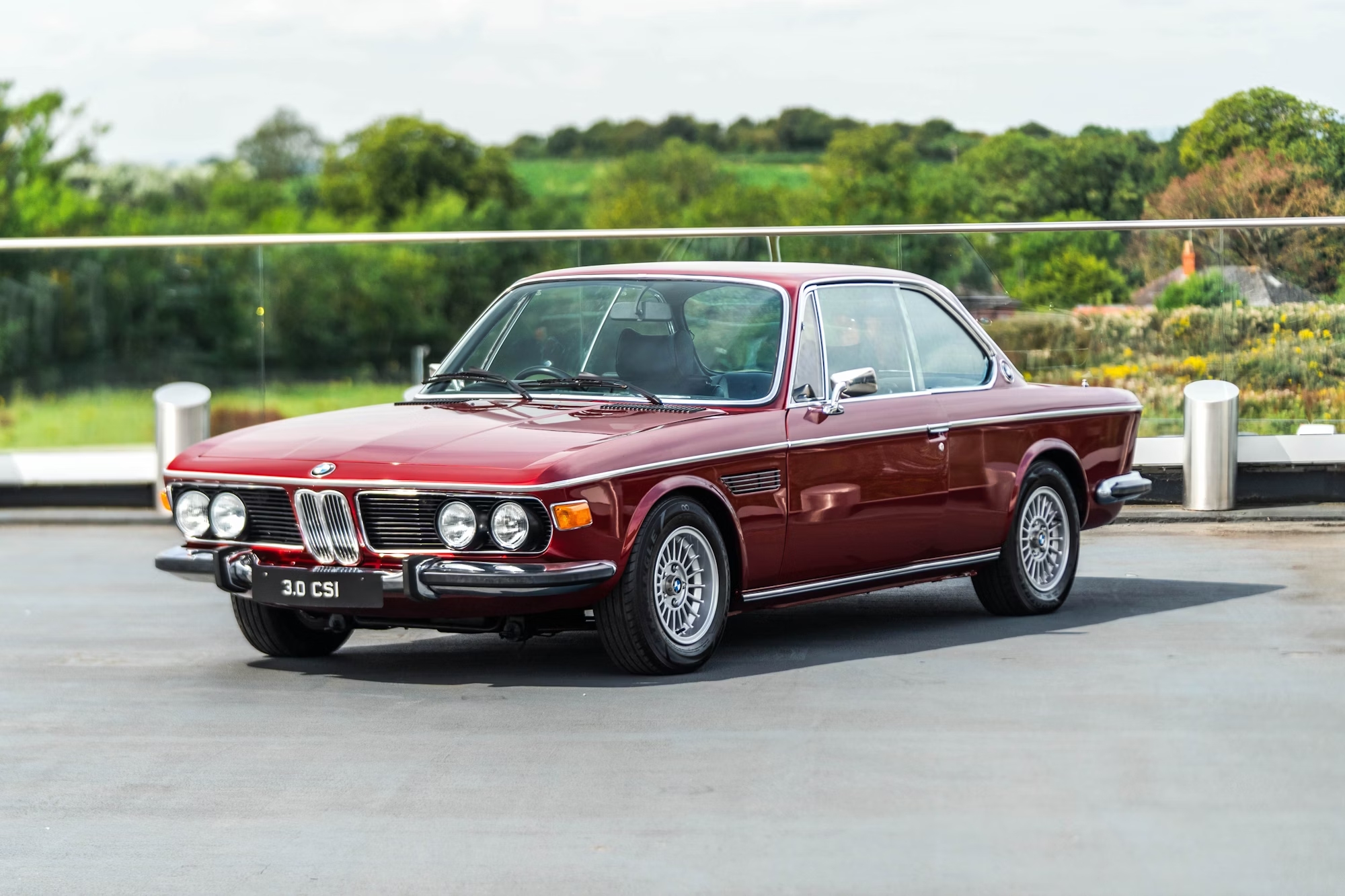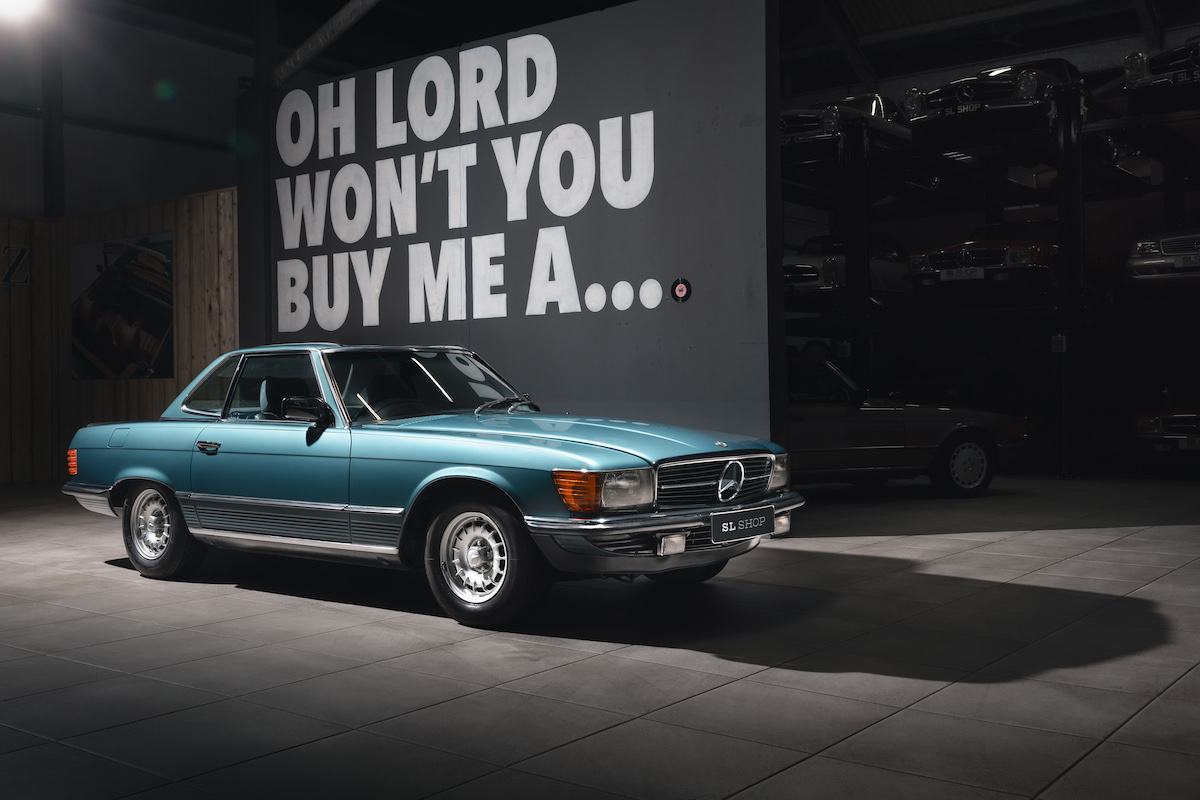More than 150,000 Alpine enthusiasts and some 1700 of the French marque’s distinctive vehicles descended on the brand’s spiritual home recently to celebrate Alpine’s 70th anniversary on May 30 and June 1, 2025.
The exceptional weekend of celebrations was focused on Dieppe, the home town of Jean Rédélé, founder of the Alpine brand, who created his first Alpine vehicle in 1955.
The three days of festivities were based on the lawns along Dieppe’s seafront where the crowd were treated to autograph sessions with Alpine drivers, entertainment and parades through the city centre featuring notable Alpine models.
To round off the weekend, the largest-ever Alpine parade took place on the former Dieppe/St-Aubin circuit, symbolically bringing together 700 Alpine vehicles over 7km to celebrate the brand’s 70th anniversary.
Along with hundreds of historic vehicles, fans were able to see the brand’s first electrically-powered sport fastback, the A390, along with the current A110 range including the anniversary series A110 R 70, the A110 GTS and the A110 R Ultime.
The public also got to see the Alpenglow Hy6, equipped with the brand’s first six-cylinder hydrogen combustion engine, take to the streets of the city centre.
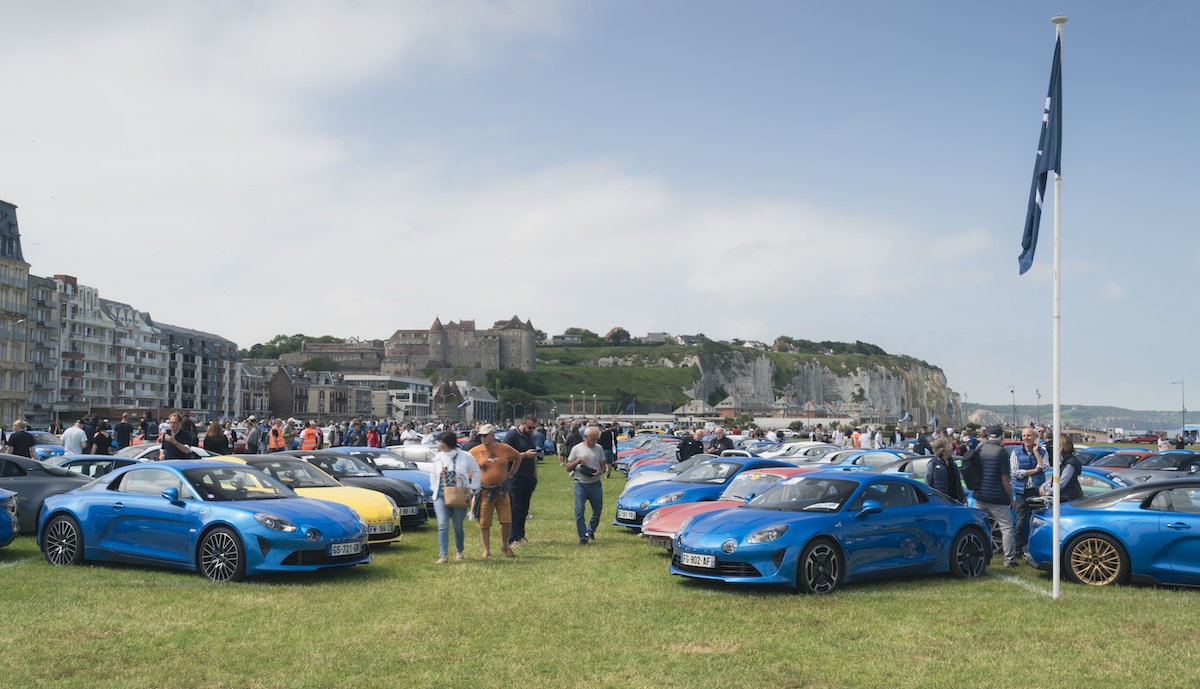
Retracing the Alpine story
Raised from a very young age in a world dominated by cars, racing and Renault, Alpine founder Jean Rédélé distinguished himself through an avant-garde vision of technology and business.
The eldest son of Émile Rédélé, a Renault dealer based in Dieppe and formerly an official mechanic for Ferenc Szisz, the brand’s first ‘factory driver’, Jean was destined to follow in his father’s footsteps.
At the age of just 24, having completed his studies at HEC business school in Paris, he became the youngest car dealer in France.
Reasoning that ‘motorsport is the best way to test production cars and victory is the best sales tool’, he entered his first competitive event at the age of 28.
After a trial run at the Rallye Monte-Carlo in 1950, he triumphed in the inaugural Rallye de Dieppe behind the wheel of the new 4CV.
This nationally-acclaimed victory convinced Renault to entrust him with a 4CV ‘1063’ – the special racing version – for the following season.
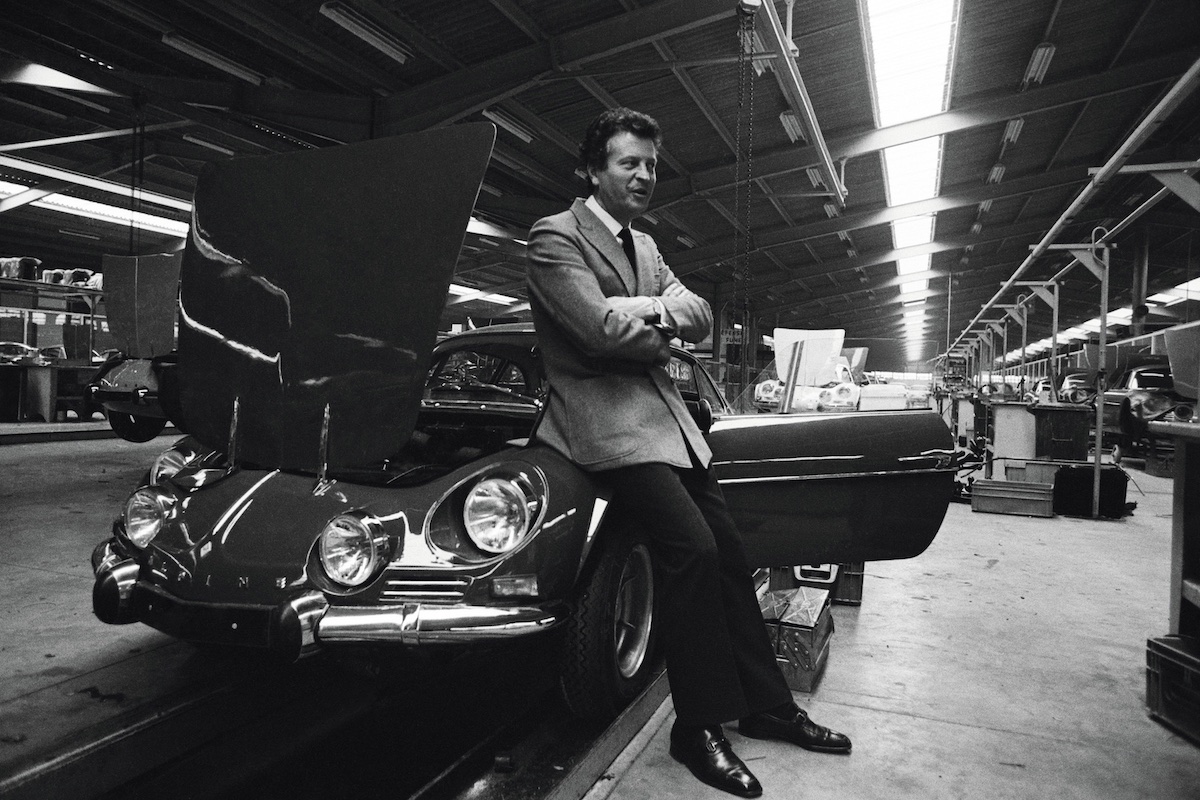
Jean’s efforts to improve the performance of the vehicle led him to Giovanni Michelotti, from whom he ordered a 4CV ‘Spéciale Sport’, whose chief attribute was an aerodynamically streamlined aluminium body.
This was the beginning of a unique collaboration between the French rally driver and the Italian designer that would eventually give birth to three unique models.
While awaiting the delivery of the new car, Rédélé and his co-driver Louis Pons continued to compete in the 4CV ‘1063’, including developing a five-speed gearbox that played an important role in their record-breaking class victory in the Mille Miglia.
In 1953, Jean Rédélé finally got his hands on his 4CV ‘Spéciale’, winning the 4th Rallye de Dieppe ahead of two Jaguars and a Porsche on the very first outing.
The following year, the Rédélé/Pons pairing triumphed in their class for the third time on the Mille Miglia, before going on to prevail in the Coupe des Alpes.
The notion of creating his own brand played on Jean Rédélé’s mind, and it was his father-in-law who eventually helped him to turn his dream into reality. Charles Escoffier was one of the leading Renault dealers of the era and it was this relationship proved the catalyst for the foundation of the ‘Société des Automobiles Alpine’ on June 25, 1955.
How the A106 Marked the Beginning of an Incredible Adventure
Jean Rédélé’s formula for business success was founded on principles discovered during his racing career: simple yet competitive mechanicals, using the highest proportion of production parts possible, and clothed by a lightweight and attractive body.
When Charles Escoffier asked his son-in-law to assist with the development and marketing of a series of ‘Coaches’ commissioned by Gessalin & Chappe, these prerequisites were already evident in Jean Rédélé’s response.
Designed by Jean Gessalin and built by the Chappe brothers, the first prototype was presented by Escoffier to Renault’s management board in February, 1955.
Once its homologation had been confirmed, Jean Rédélé set about working his magic, making modifications borne out of the 4CVs developed in tandem with Michelotti. The ‘Coach’ took on the name A106: ‘A’ for Alpine and ‘106’ in reference to the code name of the 4CV, which served as a source for parts.
At the beginning of July, three Alpine A106s in the colours of the French flag – one in blue, one white and one red – paraded through the courtyard of Renault’s headquarters in Boulogne-Billancourt, marking the moment where Jean Rédélé became a fully-fledged car manufacturer in his own right.
Mechanically, the Alpine A106 used the same chassis and suspension as the 4CV. The 747cc, four-cylinder in-line engine was offered in two versions – one producing 21hp, the other 38hp. This first Alpine stood out above all for its polyester body, fitted to the original chassis of the 4CV.
As options, it was possible to equip the A106 with the ‘Claude’ five-speed gearbox or the ‘Mille Miles’ suspension, composed of four rear shock absorbers.
True to his principles of continuous improvement, Jean Rédélé relentlessly sought to make advances to the A106, eventually opening his own body shop: RDL.
His independent spirit was further evinced in the launch of a cabriolet version, designed by Michelotti and unveiled at the 1956 Paris Motor Show. A third variation saw the light of day in 1958: the A106 ‘Coupé Sport’ – effectively the cabriolet but with a hard-top.
With 251 cars produced between 1955 and 1960, the A106 enabled Jean Rédélé to successfully establish his business – but that was only the first phase…
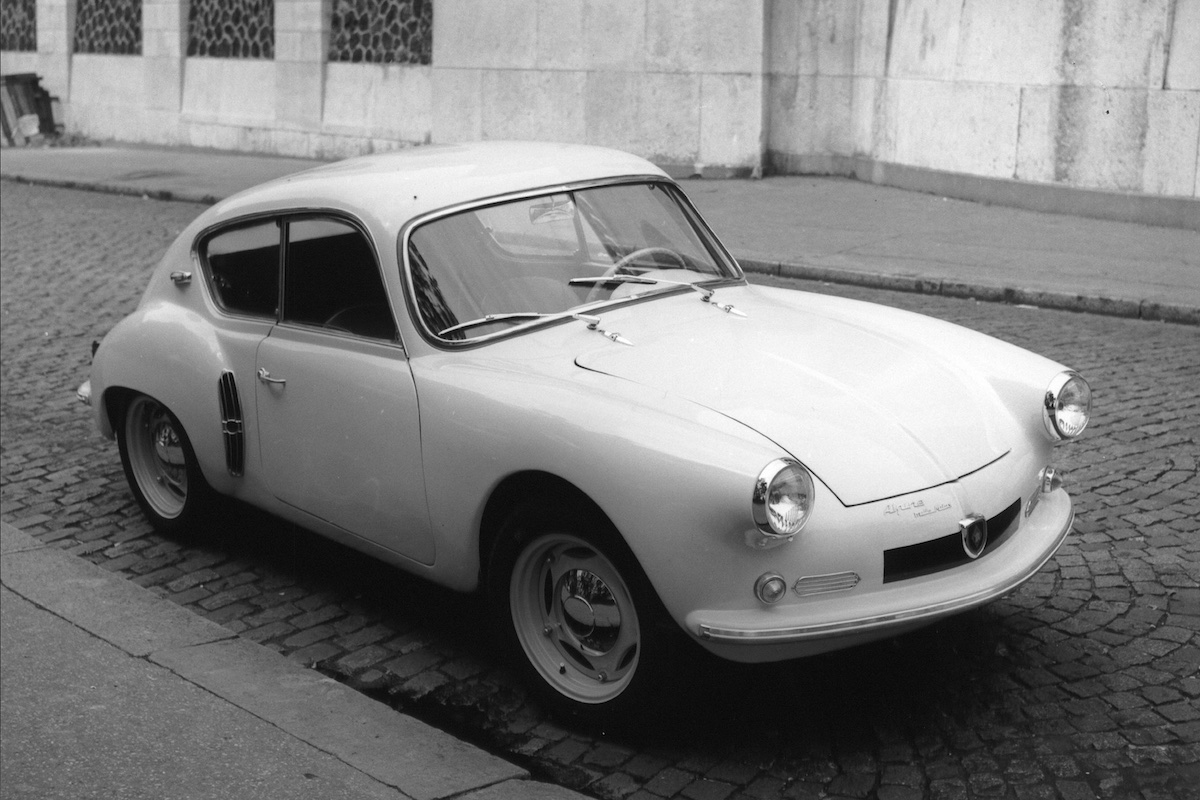
Introducing the A108: The first Berlinette
It’s difficult to know whether to talk about the A108 or the A108s, as there were so many different body types and configurations that it is difficult to paint an accurate picture for a model of which just 236 examples were built between 1958 and 1965.
The A108 appeared for the first time at the 1957 Paris Motor Show. The body of the A106 ‘Coach’ – produced by Chappe & Gessalin – and the RDL cabriolet were initially retained, with the real changes taking place under the bonnet: the engine from the 4CV was replaced by the 845cc ‘Ventoux’ powerplant from the Renault Dauphine. Over time, it became possible to opt for a re-bored 904cc unit prepared by Marc Mignotet, or the 998cc engine from the Dauphine Gordini.
The style evolved too, based on a variant of the A106 conceived by youthful designer Philippe Charles. Using the Michelotti-designed cabriolet as his starting-point, Philippe covered the headlights with a Perspex bubble and made the rear of the car longer, to achieve a slimmer and more streamlined shape.
Baptised ‘Berlinette’, this car was entered into the 1960 Tour de France Automobile by Jean Rédélé himself, and its success ensured the new look was soon transferred across to the cabriolets and ‘Coupé-Sports’ produced by RDL.
Another significant corner was turned in 1961, with the generalisation of the ‘beams and backbone’ chassis across all models. This architecture was based on a robust central beam, onto which were grafted side rails that supported the front and rear sub-frames. Enhancing stiffness and reducing weight, this innovation would be the secret behind the superb handling of Alpine cars throughout the generations.
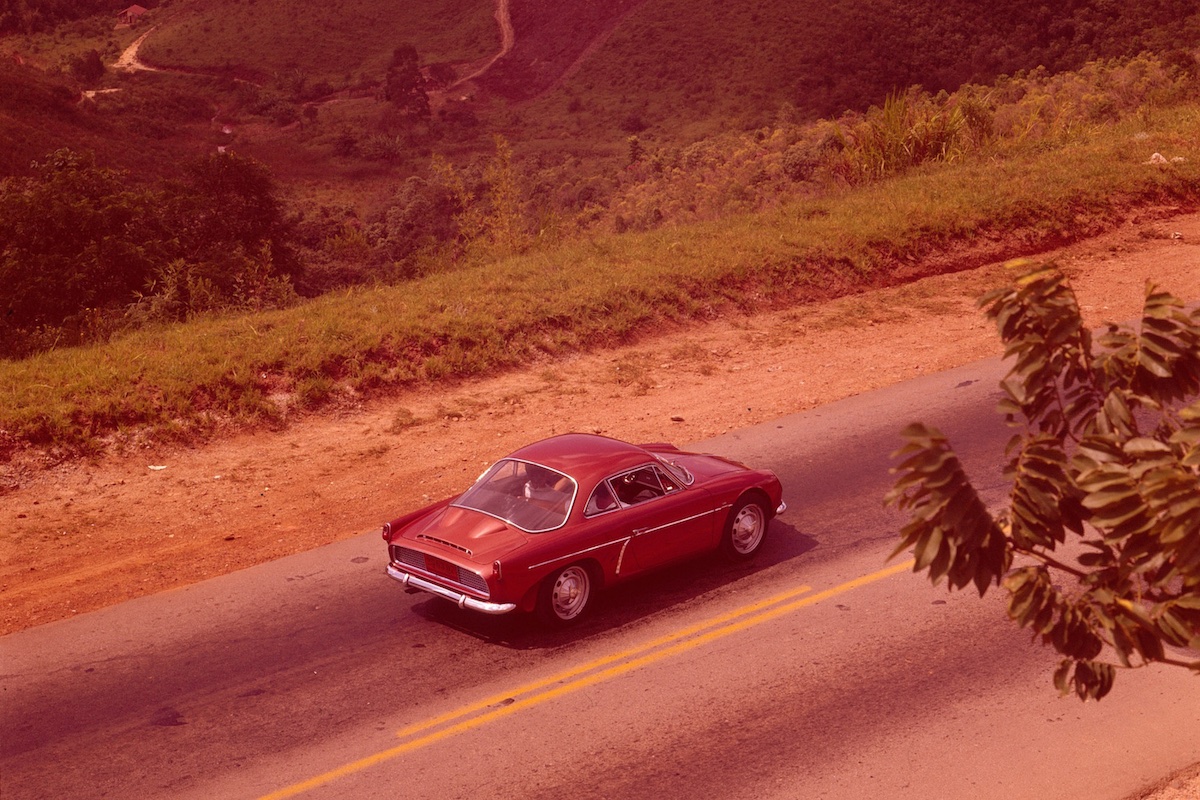
The Willys-Interlagos and Alpine’s innovative export policy
Insufficient finances meant Jean Rédélé was unable to expand his brand internationally via exports, instead he came up with the idea of suggesting to industrial partners that they manufacture his cars under licence.
It helped that Alpines were relatively easy to assemble, even for unqualified labour. They were also highly-regarded for their reliability, since they used mass-produced mechanical components from Renault.
It was in Brazil that Rédélé achieved the international breakthrough he hoped for, via the Willys-Overland firm. The company was already manufactured Dauphines under licence from Renault, and began production of the A108 using equipment supplied by the Dieppe factory.
From 1960, ‘Interlagos’ models – named after the famous Brazilian motor racing circuit – left the Sao Paulo workshop, with only the trained eye able to distinguish an ‘Interlagos’ from its Alpine A108 sister car.
This partnership continued with the A110, and in total, 1,500 coupés, Berlinettes and cabriolets were produced up until 1966.
As in France, these Alpines manufactured across the other side of the Atlantic proved to be very capable in motorsport, most notably in endurance races such as the Mil Milhas. Indeed, it was after starting out in ‘Interlagos’ models that the likes of Carlos Pace, Emerson Fittipaldi and brother Wilson Fittipaldi headed to Europe to climb the career ladder all the way up to Formula 1.
This collaboration served as a model for similar agreements in Mexico (Dinalpine), Spain (Fasa), Belgium (Small) and Bulgaria (Bulgaralpine), resulting in nearly 15 per cent of Alpines at the time being built under licence abroad.
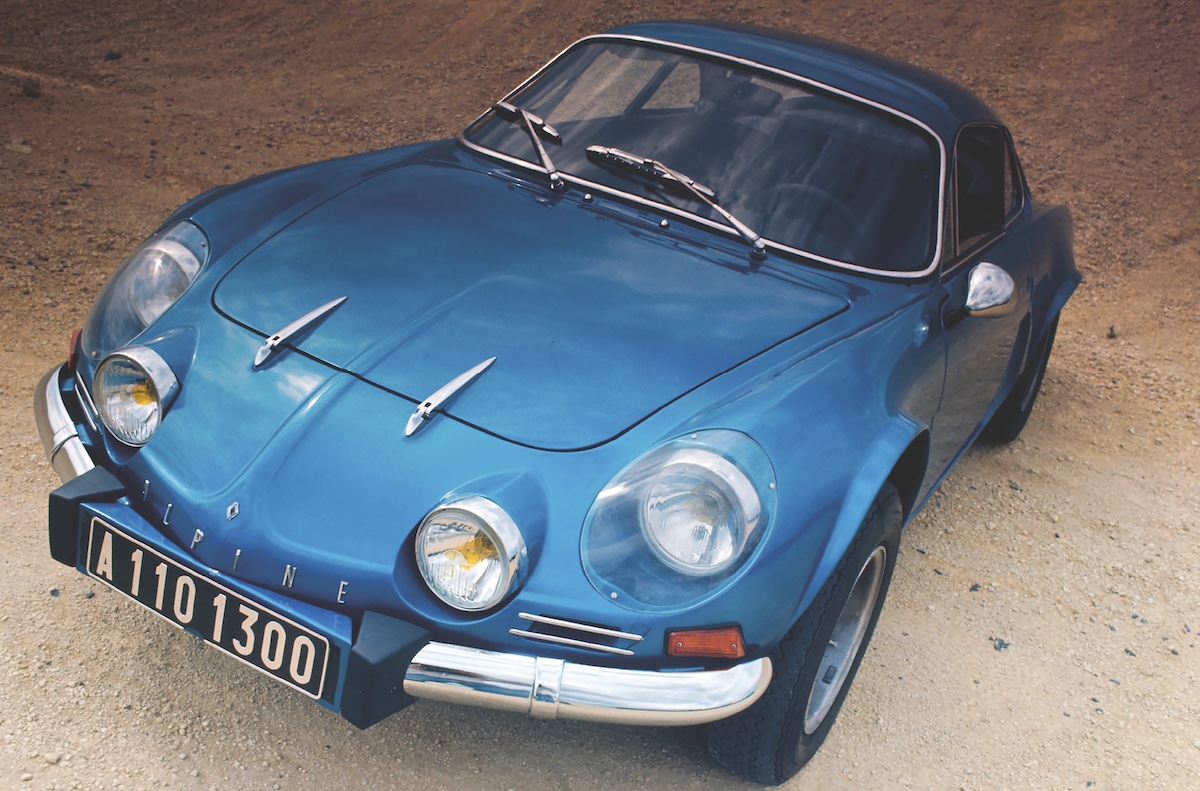
The A110 and the making of a legend
In providing the visual identity conceived by Philippe Charles and the ‘beams and backbone’ chassis architecture, the A108 laid the foundations for the A110, which appeared in 1962. As the 4CV had done for the A106 and the Dauphine for the A108, it was the Renault 8 that acted as a parts bank for Jean Rédélé’s latest creation.
The relationship with Renault – close from the very first day – was further strengthened when the French manufacturer tasked Alpine with representing it in motorsport. What’s more, from 1967, every car produced would bear the official name ‘Alpine-Renault’.
Buoyed by the brand’s excellent results in rallying, the Berlinette went on to achieve tremendous commercial success. Alpine found itself needing to adapt its manufacturing set-up to meet increasing demand, with production shared between the workshop on avenue Pasteur in Paris, the original Dieppe factory and the new plant in Thiron-Gardais (Eure-et-Loir).
Over the course of its different versions, the A110 evolved constantly. The 1108cc engine was succeeded in-turn by 1255cc, 1565cc and 1605cc units. Outward changes were minor, but frequent: a grille incorporating four headlights, extended wheel arches, front radiator, removable rear apron and more. In 1977, A110 production ended with the 1600SX, fitted with a 1647cc powerplant.
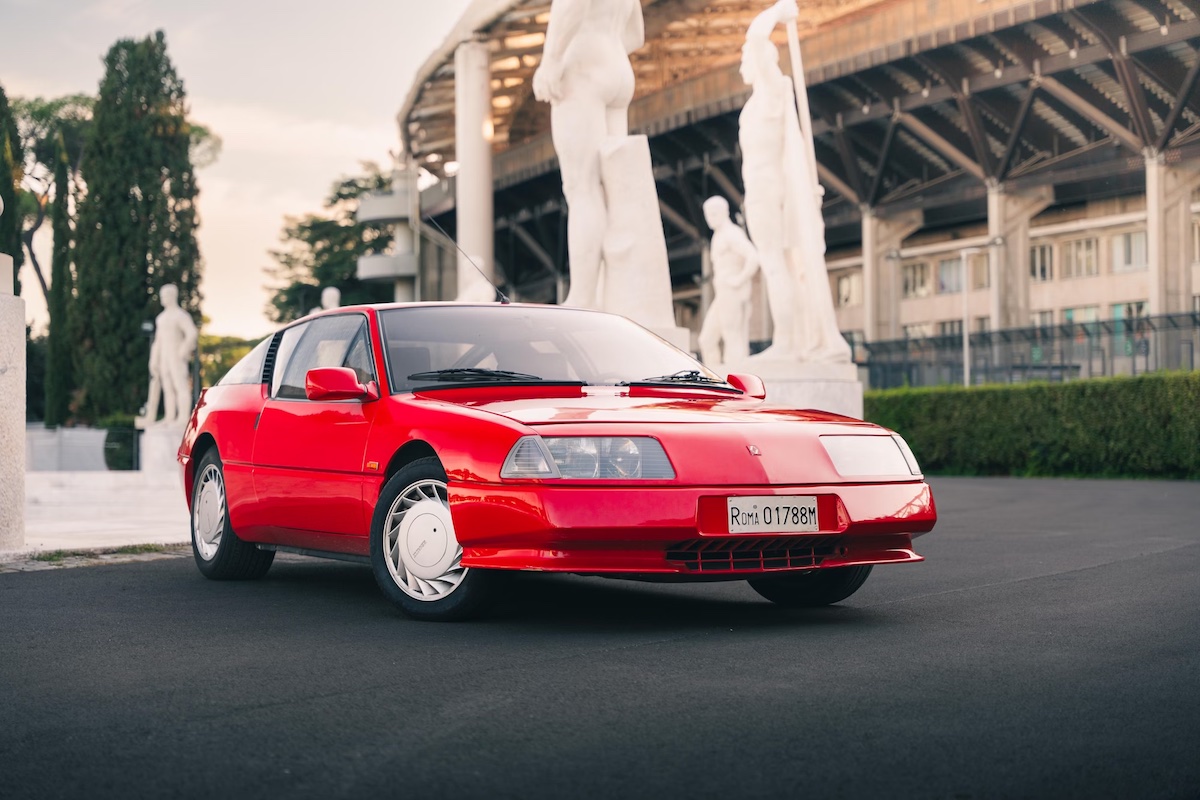
How Alpine evolved from the spartan Berlinette to the potent and luxurious GTA
Designed by Jean Rédélé himself, the Alpine A310 looked set to enable the brand to capitalise upon the success of the Berlinette – but the oil crisis of 1973 caused a significant drop in sales.
Bit by bit, Alpine evolved its new model, introducing fuel injection in 1974, the V6 PRV engine in 1976 and the same rear suspension as the Renault R5 Turbo in 1981.
In 1985, the new GTA made its debut. This model marked a further departure for Alpine from the spartan concept of the Berlinette as it turned its attentions towards the Grand Tourisme world. In its range-topping version complete with V6 Turbo engine, the 200hp (147kW) GTA was described by some media as a ‘fighter jet for the road’.
In 1990, the A610 joined the Alpine line-up with a 2963cc V6 Turbo power plant. Despite the press praising its handling abilities and dynamic performance, this model struggled to find its niche and was discontinued in 1995.
After production of the A610 ceased, the Dieppe factory focused its efforts on the manufacture of numerous high-performance models for Renault Sport, from the R5 Turbo to the Clio R.S., Renault Sport Spider and Clio V6. Today, this historic site – which has always proudly retained the Alpine logo on its walls – is right at the heart of the brand’s rebirth.
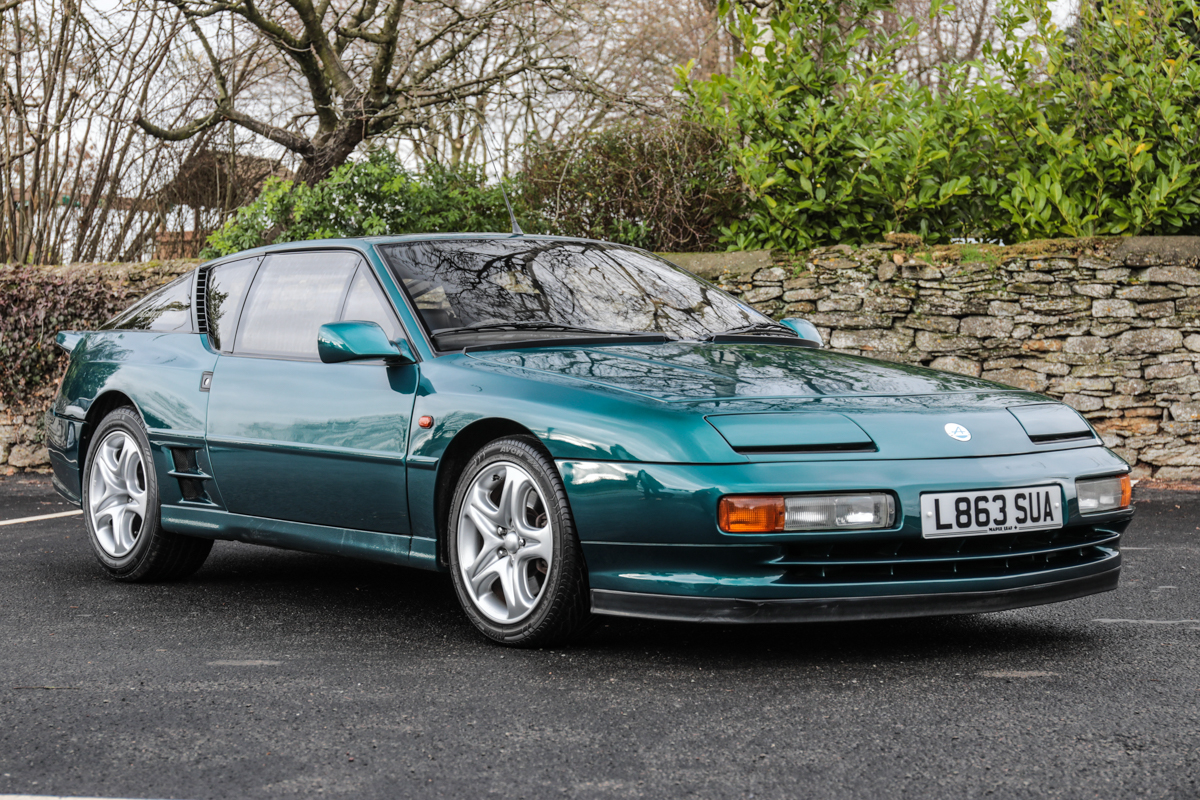
The Alpine renaissance
Frequently debated and palpably desired by fans for almost 20 years, the Alpine brand’s revival by Renault needed to be handled correctly if it was to prove a success. Expectations were so high that disappointment simply wasn’t an option!
The unveiling of the Alpine A110-50 concept car to mark the 50th anniversary of the Berlinette in 2012 represented a timely litmus test as to whether the interest was still strong. It was.
On November 5, 2012, Carlos Ghosn officially announced the rebirth of Alpine. When no fewer than five A110s were entered for the 2013 edition of Rallye Monte-Carlo Historique – 40 years on from Alpine’s famous one-two-three finish in 1973 – the enthusiasm generated was such that reneging on the decision to revive the brand was no longer an option.
In 2018, the brand relaunched with the new A110, a sports car faithful to the brand’s principles of compactness, lightness, agility and driving pleasure. In 2021, Alpine Cars, Renault Sport Cars and Renault Sport Racing joined forces under the Alpine flagship. This year, the Alpine A290 was even named European Car of the Year alongside its twin-under-the-skin, the Renault 5.
These days, within Groupe Renault, Alpine is the brand dedicated to innovative, exclusive sportscars of, benefiting from the heritage and craftmanship of its historic plant in Dieppe, as well as the engineering expertise from the Formula One and Renault Sport teams. This expertise enables the brand to compete in two FIA championships: Formula 1 and the World Endurance Championship. Alpine is also present in other racing disciplines through its customer racing programme in Rally, Cup and GT4.
